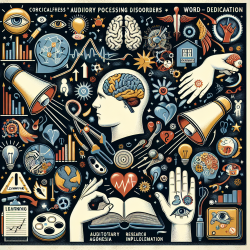Introduction
The Alzheimer's Disease Neuroimaging Initiative (ADNI) has been pivotal in advancing our understanding of Alzheimer's Disease (AD) through the development and validation of biomarkers. While primarily focused on AD, the methodologies and outcomes from ADNI research hold valuable insights for other fields, including speech-language pathology (SLP), particularly in creating better outcomes for children.
Understanding ADNI's Contributions
ADNI's work, particularly through the Private Partners Scientific Board (PPSB), has streamlined biomarker discovery and validation. This has been achieved through collaborations across industry, biotechnology, and non-profit organizations. The initiative has emphasized the importance of public-private partnerships, which have contributed significantly to its success. These collaborations have not only advanced AD research but also offer a model for similar initiatives in other fields, such as SLP.
Application to Speech-Language Pathology
Speech-language pathologists can draw from ADNI's data-driven approach to enhance assessment and intervention strategies. Here are some key takeaways:
- Biomarker Utilization: Just as ADNI uses biomarkers to track disease progression, SLPs can explore biomarkers related to speech and language development. This could lead to earlier identification of speech and language disorders in children.
- Neuroimaging Techniques: ADNI's use of advanced neuroimaging techniques can inspire SLPs to incorporate neuroimaging in research and practice, offering insights into the neurological underpinnings of speech and language disorders.
- Public-Private Partnerships: The success of ADNI's partnerships suggests that similar collaborations in SLP could lead to innovative research and improved therapeutic outcomes.
Encouraging Further Research
ADNI's comprehensive data sharing model is a testament to the power of open data in advancing scientific understanding. SLP practitioners are encouraged to engage with ADNI's data, which is freely available, to explore potential applications in their field. By doing so, they can contribute to a growing body of research that bridges the gap between neuroimaging and speech-language pathology.
Conclusion
ADNI's research underscores the importance of data-driven approaches and collaborative efforts in advancing our understanding of complex conditions. For speech-language pathologists, integrating these insights into practice can lead to significant improvements in outcomes for children. By leveraging biomarker research and fostering partnerships, the field of SLP can continue to innovate and enhance therapeutic interventions.
To read the original research paper, please follow this link: The Alzheimer's Disease Neuroimaging Initiative and the role and contributions of the Private Partners Scientific Board (PPSB).










